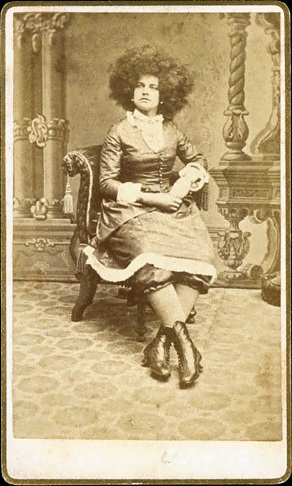Afro
Afro refers to a hairstyle characterized by a dense, even, spherical shape. It is a natural hairstyle that comes from the length and texture of Afro-textured hair, which is common among people of African descent. The Afro has a rich cultural and historical significance, representing a celebration of black heritage and a rejection of Eurocentric beauty standards. It gained popularity during the 1960s and 1970s in the United States, aligning with the Black Power movement and the broader civil rights movement, serving as a symbol of pride, identity, and empowerment.
History[edit | edit source]
The origins of the Afro are rooted in Africa, where people wore their hair in natural styles that included locks, plaits, and twists long before the transatlantic slave trade. During the slave trade, Africans were forcibly brought to the Americas, and their traditional hairstyles were often lost due to the harsh conditions of slavery, including the lack of proper grooming tools and time. In the Americas, enslaved Africans and their descendants often had to adapt by creating new hairstyles that could be maintained under these conditions.
In the 20th century, particularly during the 1960s and 1970s, the Afro became a prominent symbol of the African American civil rights and Black Power movements. It was embraced as a rejection of the dominant beauty standards that idealized straight hair, and as a powerful affirmation of black identity and heritage. Icons such as Angela Davis, Jimi Hendrix, and the members of the Jackson 5 were known for their Afros, which helped to popularize the style.
Cultural Significance[edit | edit source]
The Afro is more than just a hairstyle; it is a statement of identity and pride. It challenges traditional beauty norms and celebrates the natural texture of Afro-textured hair. The style has been embraced by various movements seeking to affirm African heritage and reject assimilation into mainstream culture. In recent years, the Afro has seen a resurgence as part of the natural hair movement, which encourages people of African descent to embrace their natural hair texture.
Maintenance[edit | edit source]
Maintaining an Afro requires specific care to keep the hair healthy and the style intact. This includes regular washing, conditioning, and moisturizing to prevent the hair from becoming dry and brittle. Detangling is also a crucial part of Afro hair care, often done with a wide-tooth comb or fingers to minimize breakage. Additionally, protective styles and night-time care routines, such as wearing a silk or satin scarf or bonnet, can help to maintain the hair's moisture and shape.
In Popular Culture[edit | edit source]
The Afro has made significant inroads into popular culture, influencing music, fashion, and media. It has been featured in films, television shows, and magazines, often as a symbol of black beauty, strength, and heritage. The style continues to be celebrated and reinvented by artists, celebrities, and influencers, contributing to its enduring popularity and significance.
See Also[edit | edit source]
Search WikiMD
Ad.Tired of being Overweight? Try W8MD's physician weight loss program.
Semaglutide (Ozempic / Wegovy and Tirzepatide (Mounjaro / Zepbound) available.
Advertise on WikiMD
|
WikiMD's Wellness Encyclopedia |
| Let Food Be Thy Medicine Medicine Thy Food - Hippocrates |
Translate this page: - East Asian
中文,
日本,
한국어,
South Asian
हिन्दी,
தமிழ்,
తెలుగు,
Urdu,
ಕನ್ನಡ,
Southeast Asian
Indonesian,
Vietnamese,
Thai,
မြန်မာဘာသာ,
বাংলা
European
español,
Deutsch,
français,
Greek,
português do Brasil,
polski,
română,
русский,
Nederlands,
norsk,
svenska,
suomi,
Italian
Middle Eastern & African
عربى,
Turkish,
Persian,
Hebrew,
Afrikaans,
isiZulu,
Kiswahili,
Other
Bulgarian,
Hungarian,
Czech,
Swedish,
മലയാളം,
मराठी,
ਪੰਜਾਬੀ,
ગુજરાતી,
Portuguese,
Ukrainian
Medical Disclaimer: WikiMD is not a substitute for professional medical advice. The information on WikiMD is provided as an information resource only, may be incorrect, outdated or misleading, and is not to be used or relied on for any diagnostic or treatment purposes. Please consult your health care provider before making any healthcare decisions or for guidance about a specific medical condition. WikiMD expressly disclaims responsibility, and shall have no liability, for any damages, loss, injury, or liability whatsoever suffered as a result of your reliance on the information contained in this site. By visiting this site you agree to the foregoing terms and conditions, which may from time to time be changed or supplemented by WikiMD. If you do not agree to the foregoing terms and conditions, you should not enter or use this site. See full disclaimer.
Credits:Most images are courtesy of Wikimedia commons, and templates, categories Wikipedia, licensed under CC BY SA or similar.
Contributors: Prab R. Tumpati, MD





